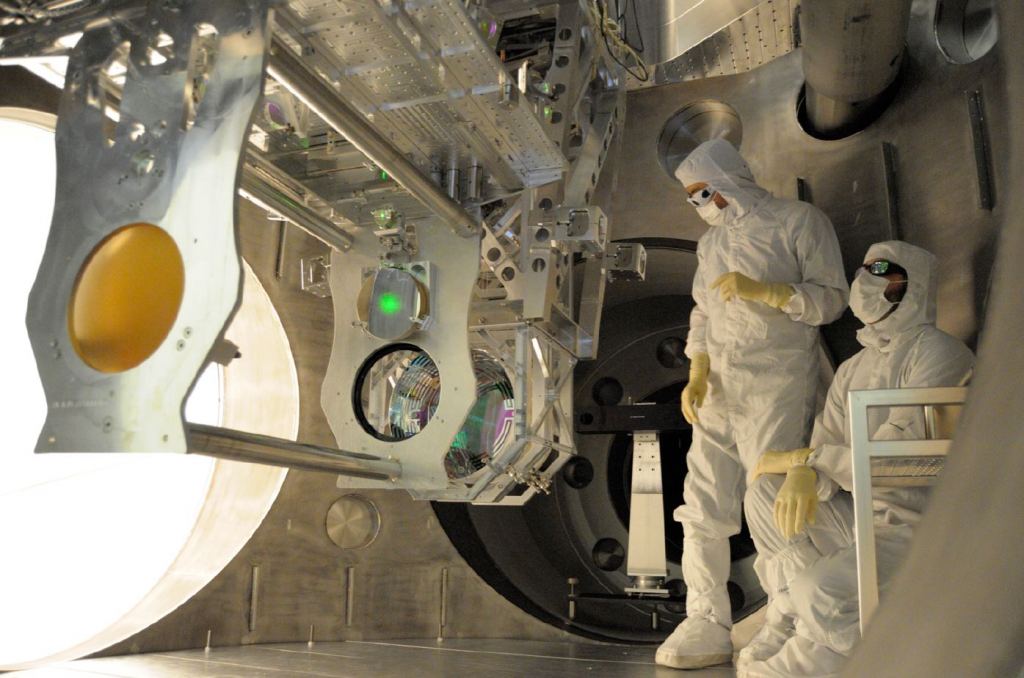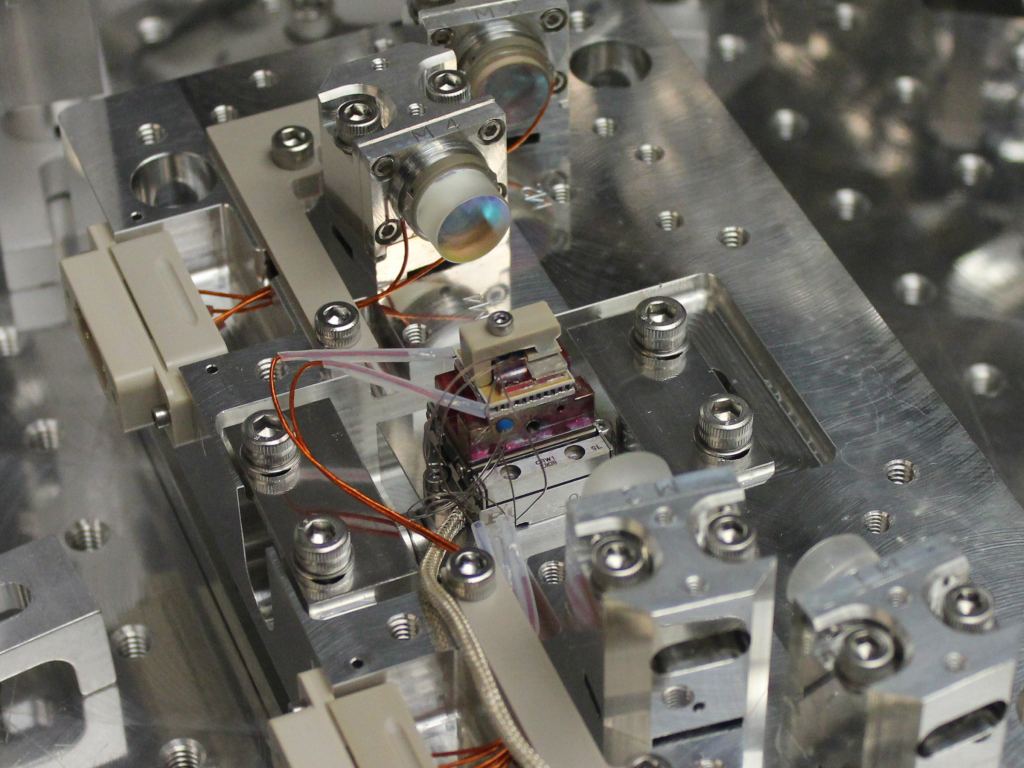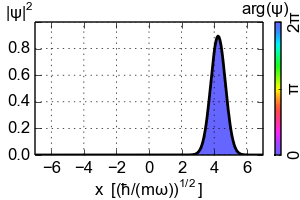When two black holes merge, they release a tremendous amount of energy. When LIGO detected the first black hole merger in 2015, we found that three solar masses worth of energy was released as gravitational waves. But gravitational waves don’t interact strongly with matter. The effects of gravitational waves are so small that you’d need to be extremely close to a merger to feel them. So how can we possibly observe the gravitational waves of merging black holes across millions of light-years?
It’s ridiculously difficult. Gravitational waves are ripples in the structure of spacetime. When a gravitational wave passes through an object, the relative positions of the particles in the object shift slightly, and it’s only through those shifts that we can detect the gravitational waves. But that shift is minuscule. LIGO measures the shift by pairs of mirrors that are 4 kilometers apart. When a strong gravitational wave passes LIGO, the mirrors shift by only a few thousandths of the width of a proton. Schematic showing how LIGO works. Credit: Johan Jarnestad/The Royal Swedish Academy of Sciences
Schematic showing how LIGO works. Credit: Johan Jarnestad/The Royal Swedish Academy of Sciences
LIGO measures this distance by a process known as laser interferometry. Light has wavelike properties, so when two beams of light overlap, they combine like waves. If the waves of the light line up, or are “in phase,” then they superpose to become brighter. If they are out of phase, they cancel out and become dimmer. So LIGO starts with a beam of light that in phase, and splits it, sending one beam along one arm of LIGO, and one along the other. The beams each bounce off a mirror 4 kilometers away, then return to combine into a single beam seen by a detector. If the distance of a mirror changes, so does the brightness of the combined light.
The wavelength of light is on the order of a micrometer, but gravitational waves only shift the mirrors by only a trillionth of that distance. So LIGO has each beam travel back and forth along an arm hundreds of times before they combine. This dramatically increases the sensitivity of LIGO, but it also raises other problems. LIGO mirrors being upgraded. Credit: Caltech/MIT/LIGO Lab
LIGO mirrors being upgraded. Credit: Caltech/MIT/LIGO Lab
To work, the LIGO mirrors need to be isolated from any background vibrations from the ground and nearby instruments. To achieve this, the mirror arrays are suspended by thin threads of glass. The entire system also needs to be placed in a vacuum. The detector is so sensitive that air molecules passing through the light beams are picked up as noise. The air pressure inside LIGO‘s vacuum chamber is less than a trillionth of an atmosphere, which is lower than intergalactic space.
To the limits of human engineering, the LIGO system is an isolated vacuum system where the only thing that can move the mirrors is gravity itself. It isn’t perfect, but it is very good. So good that things start to get weird. Even if the detector was perfectly isolated, and placed in a perfect vacuum, the detectors would still pick up noise. The system is so sensitive that can pick up quantum fluctuations in empty space.
A central property of quantum systems is that they can never be completely pinned down. It’s part of Heisenberg’s Uncertainty Principle. This is true even for a vacuum. This means quantum fluctuations appear within the vacuum. As photons of light travel through these fluctuations, they are jostled a bit. This makes the beams of light move slightly out of phase. Imagine a fleet of small boats sailing across a rough sea, and how difficult it would be to keep them together. A close up of LIGO’s quantum squeezer. Credit: Maggie Tse
A close up of LIGO’s quantum squeezer. Credit: Maggie Tse
But quantum uncertainty is a funny thing. Although aspects of a quantum system will always be uncertain, parts of it can be extremely precise. The catch is that if you make one part more precise another part becomes less precise. For light, this means you can keep the phase of the beam more aligned by making the brightness of the light more uncertain. This is known as squeezed light because you squeeze one uncertainty smaller at the cost of another.  Animation showing a squeezed state of light. Credit: Wikipedia user Geek3
Animation showing a squeezed state of light. Credit: Wikipedia user Geek3
This squeezed state of light is done through an optical parametric oscillator. It’s basically a set of mirrors around a special kind of crystal. When the light passes through the crystal, it minimizes the fluctuations in phase. The fluctuations in amplitude get larger, but it’s the phase that matters most to the LIGO detectors.
With this upgrade, the sensitivity of LIGO should double. This will help astronomers see black hole mergers more clearly. It could also allow LIGO to see new kinds of mergers. Ones that are fainter or farther away than we’ve ever seen before.